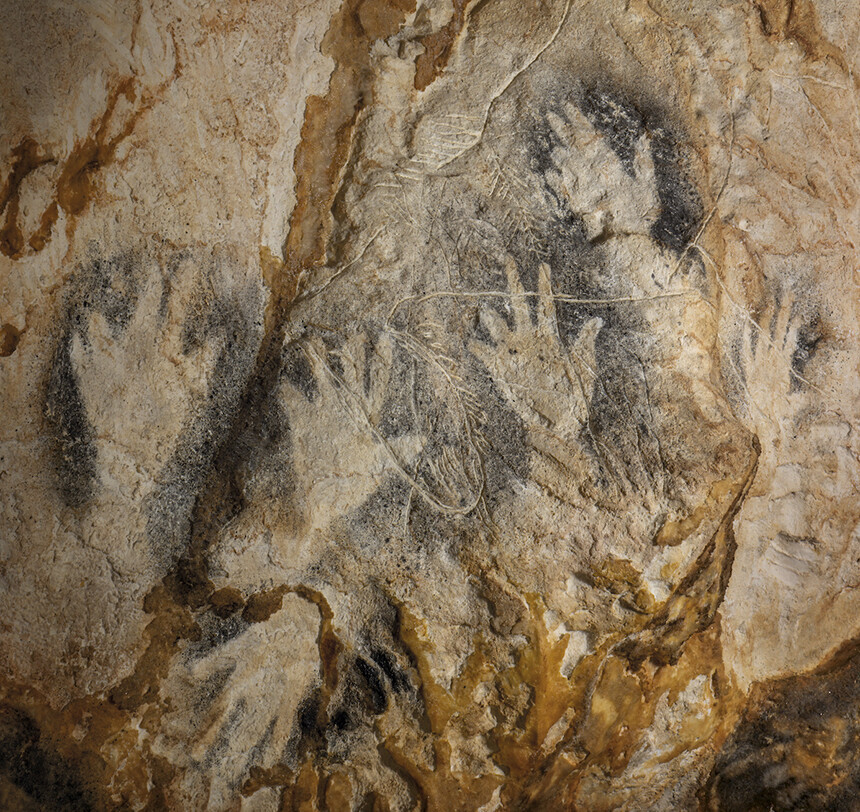Hidden beneath the waves off the coast of Marseille, France, lies one of the most extraordinary archaeological sites ever discovered: the Cosquer Cave. This submerged wonder, located 37 meters below sea level, offers a rare glimpse into the world of prehistoric humans and their relationship with art, nature, and a changing environment.
A Hidden Treasure Beneath the Waves

When the Cosquer Cave was carved into history by its prehistoric inhabitants, it lay on dry land, far above the sea. Today, its entrance is submerged, accessible only to those equipped for underwater exploration. The cave challenges our understanding of human adaptation, showing how ancient communities thrived in a world of shifting climates and landscapes.
A Canvas of Ancient Life

The walls of the Cosquer Cave are adorned with approximately 600 paintings and engravings, a testament to the artistic prowess of our ancestors. These depictions include a wide variety of animals such as horses, bison, ibex, and seals, alongside symbolic hand stencils. This vivid imagery bridges the vast chasm of time, connecting us directly to the Upper Paleolithic artists who left their mark some 33,000 to 19,000 years ago.
Unraveling the Mysteries of the Grotte Cosquer
A Geological Time Capsule

The cave’s underwater location has helped preserve its contents while also serving as a record of Earth’s dramatic climatic shifts. Its discovery has provided scientists and archaeologists with new insights into the lives of early humans and the environmental changes that influenced their survival and cultural development.
The Artistic Legacy
Among the artworks are over 142 animal figures, illustrating the biodiversity of the era. Interestingly, the presence of both terrestrial and marine creatures in the cave’s art reflects the varied ecosystem that surrounded the cave during its occupation. These images capture not only the fauna of the time but also the deep symbolic and observational skills of the artists.

Symbolic Handprints
A particularly striking feature of the cave is its collection of handprints—over fifty-five of them, created in both positive and negative forms. Concentrated near a deep ancient shaft, these prints might have served symbolic or navigational purposes, hinting at the complex cognitive and social structures of these early communities.

Preservation Challenges and Modern Solutions
Safeguarding a Fragile Heritage

Preserving the Cosquer Cave is a race against time. Rising sea levels threaten to submerge it further, and its fragile walls are vulnerable to human interference. Strict access controls are in place to protect this delicate treasure, with ongoing conservation efforts led by archaeologists and environmental scientists.
Bringing Cosquer to the Public
In 2022, an innovative solution brought the wonders of the Cosquer Cave to a broader audience. A detailed and interactive replica was opened in Marseille, featuring a virtual exploration of the cave’s art and history. Visitors can navigate the exhibit using self-driving vehicles and immersive films, ensuring the cave’s legacy is accessible without compromising its preservation.
The Enduring Legacy of Grotte Cosquer
The Cosquer Cave is more than an archaeological marvel—it is a testament to the creativity, resilience, and adaptability of early humans. It serves as a bridge between our prehistoric past and present understanding of human evolution, art, and environmental awareness. As efforts to study and preserve this submerged sanctuary continue, the Cosquer Cave will undoubtedly inspire future generations to connect with the roots of human history and the shared heritage of our planet.


